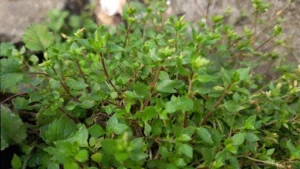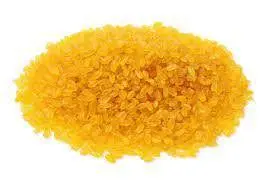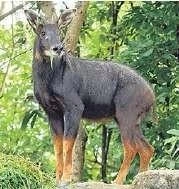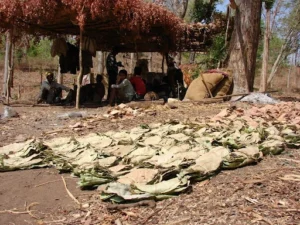UPSC GS1
Vivekananda Rock Memorial
- News: First pictures of Prime Minister Narendra Modi meditating at the Vivekananda Rock Memorial were recently released.
- Location: Vivekananda Rock Memorial is located on a small island off Kanyakumari, Tamil Nadu.
- Surrounding Waters: It is surrounded by the Laccadive Sea, where the Bay of Bengal, the Indian Ocean, and the Arabian Sea converge.

- Historical Significance of Vivekananda Rock Memorial:
-
- Construction Year: Built in 1970
- Dedication: It was built in honour of Swami Vivekananda, who is believed to have attained enlightenment on the rock.
-
- Key Structures:
-
- Shripada Mandapam: Features a footprint-shaped depression revered as the place of Swami Vivekananda’s enlightenment.
- Vivekananda Mandapam: Houses a life-sized bronze statue of Swami Vivekananda.
-
- About Swami Vivekananda:
-
- Full Name: Narendra Nath Datta
- Profession: Philosopher and social reformer
- Vedanta Philosophy: Popularised Vedanta, the ancient system of religious philosophy
- Ramakrishna Mission: He established Ramakrishna Mission in 1887, named after his Guru, Swami Ramakrishna Paramhansa.
- Belur Math: Also known as
- Influence:
- World Religion Conference: He took India’s spiritual fame to the world at the Parliament of World’s Religions held in Chicago in 1893.
- Daridra Narayana Concept: He advocated for social service and the upliftment of the downtrodden as a means to reach the divine, emphasizing “the God in the poor”.
-
UPSC GS2
AMRUT Scheme
- News: Around 36% of India’s population is living in cities and by 2047 it will be more than 50%. The World Bank estimates that around $840 billion is required to fund the bare minimum urban infrastructure over the next 15 years.
- Definition: The AMRUT (Atal Mission for Rejuvenation and Urban Transformation) scheme was a flagship programme launched by the NDA-1 government in June 2015.
- Budget: The total outlay for AMRUT was ₹50,000 crore for five years from FY 2015-16 to FY 2019-20.
- Aim: The purpose of the AMRUT mission was to:
-
- To ensure that every household has access to a tap with assured supply of water and a sewerage connection
- To increase the value of cities by developing greenery and well-maintained open spaces such as parks and
- To reduce pollution by switching to public transport or constructing facilities for non-motorised transport.
-
- AMRUT 2.0: It was launched on 01 October, 2021 for the period of 05 years i.e. from the financial year 2021-22 to the financial year 2025-26.
- Aim:
-
- It is designed to provide universal coverage of water supply through functional taps to all households in all the statutory towns in the country
- Coverage of sewerage/septage management in 500 cities covered in first phase of the AMRUT scheme.
- Promote circular economy of water through development of City Water Balance Plan (CWBP) for each city.
-
- Components:
-
- Pey Jal Survekshan: To ascertain equitable distribution of water, reuse of wastewater, mapping of water bodies and promote healthy competition among the cities /towns.
- Technology Sub-Mission: For water to leverage latest global technologies in the field of water.
- Information, Education and Communication (IEC) campaign: To spread awareness among masses about conservation of water.
-
Wholesale Price Index (WPI) Vs Consumer Price Index (CPI): Composition, Methodology, and Uses
UPSC GS3
Gene Drives Technology (GDT)
- News: Genetically modified (GMO) mosquitoes were recently released in Djibouti, East Africa to fight malaria.
- Objective: Control the spread of malaria by decreasing the number of biting female mosquitoes. Only female mosquitoes bite and transmit malaria and other viral diseases.
- Target Species: Anopheles stephensi mosquitoes
- Mechanism: The friendly non-biting male Anopheles stephensi mosquitoes that have been developed carry a gene that kills female offspring before they reach maturity.
- About Gene Drives Technology (GDT):
-
- Gene Drives Technology (GDT) is a revolutionary method that involves altering a specific gene in an organism to ensure its propagation through a population at a much higher rate than the typical 50% inheritance probability.
-
- Key Features of GDT:
-
- Gene Alteration: A specific gene in an organism is modified.
- Inheritance Mechanism: The altered gene is passed on to a significantly higher proportion of offspring.
-
- Applications of Gene Drives Technology: GDT has several potential applications across different fields:
- Disease Control:
-
- Insect Population Modification: Scientists aim to use GDT to modify insect populations that carry diseases such as malaria or dengue. This modification can make the insects resistant to pathogens or less capable of transmitting diseases.
-
- Environmental Management:
-
- Invasive Species Control: GDT could be employed to engineer invasive species to become infertile or less competitive, thereby protecting native ecosystems.
-
- Agricultural Enhancement:
-
- Crop Improvement: GDT can be utilized to modify crops for increased yields, improved resistance to pests and diseases, or enhanced nutritional value.
-
- Challenges and Concerns: Despite its potential, GDT faces several challenges and raises ethical concerns:
-
- Ecosystem Impact: There is a risk of unintended ecological effects due to the spread of modified genes beyond the intended target population through inter-breeding.
- Biodiversity and Ethics: The ethical implications of altering the genetic makeup of organisms, potential long-term impacts on biodiversity, and the morality of using such technology need careful consideration.
-
Jumping Genes
- News: A new plant species, Stellaria mcclintockiae, found on the slopes of the Nelliyampathy hills in Kerala has been named after Barbara McClintock, the American scientist who won the 1983 Nobel Prize for her discovery of the ‘jumping genes.’
- Definition and Mechanism:
-
- Jumping genes, also known as transposable elements, are unique DNA sequences with the ability to move from one location to another within the genome.
- This movement allows them to replicate themselves and insert copies at new locations within the genetic material.
-
- Impact on the Genome:
-
- The insertion of jumping genes can have varying effects on the genome, depending on where they integrate.
-
- Harmless Insertions:
-
- Non-Coding Regions: Often, jumping genes insert themselves into non-coding regions of the genome, which do not code for proteins. These insertions are usually harmless and do not affect the organism’s functions.
-
- Potential Risks:
-
- Gene Disruption: If jumping genes land within a coding region or a regulatory region of a gene, they can disrupt the gene’s function. This disruption can lead to mutations and, in some cases, diseases.
-
- Stellaria mcclintockiae:
-
- This is the first species of the genus Stellaria reported from south India.
- Stellaria mcclintockiae is an annual herb growing up to 15 cm in height.
-

-
-
- It is known to be found only in the Nelliyampathy hills as of now.
- Stellaria mcclintockiae differs from other species of this genus with respect to the features of its petals, pollen morphology, bracts, sepals, and seed architecture.
- Stellaria species are relatively small herbs with simple opposite leaves.
- It produces small flowers with 5 sepals and 5 white petals each usually deeply cleft, or none at all, all free.
-
Magellan Mission
- News: NASA’s Magellan radar has suggested that volcanoes on Venus are still active.
- Overview: The Magellan mission, an initiative of NASA, was launched on May 4, 1989, from Cape Canaveral using the space shuttle Atlantis. This mission marked the first interplanetary mission initiated from a Space Shuttle.
- Aim: This mission was designed to map the surface of Venus using radar imaging.
-
- Launched in 1989, it aimed to overcome the challenges posed by Venus’s thick atmosphere, which made visual observation difficult.
-
- Naming and Historical Significance: The mission was named after Ferdinand Magellan, the Portuguese explorer renowned for being the first to circumnavigate the Earth.
- Mission Duration:
-
- The Magellan spacecraft reached Venus in 1990, providing groundbreaking insights into the planet.
- It revealed that Venus has a relatively young surface, likely shaped by extensive lava flows from widespread volcanic activity.
-
- Mission Success and Achievements:
-
- Mapping Achievement: The Magellan mission was highly successful, achieving its primary goal of mapping over 98% of the Venusian surface.
- Scientific Contributions: The data collected has been instrumental in studying the geology of Venus, including its volcanoes, mountains, and plains.
-
- Conclusion of Mission:
-
- The Magellan mission concluded in October 1994, ending operations by deliberately plunging into the surface of Venus.
-
- Future Mission on Venus: VERITAS:
-
- NASA’s upcoming mission, VERITAS (Venus Emissivity, Radio Science, InSAR, Topography, and Spectroscopy), is set for launch in 2031. This mission aims to deepen our understanding of Venus’s surface and interior through advanced and precise observations.
-
Golden Rice (GR)
- News: A court in the Philippines has ruled against the production of genetically modified (GM) golden rice for commercial purposes over safety concerns.
- Definition: Golden rice is genetically engineered to contain higher levels of the micronutrients iron and zinc in the grains while also producing beta-carotene, a precursor to vitamin A.

- Colour: It has its rich yellow colour due to beta-carotene.
- Purpose:
-
- It has been developed to address Vitamin A deficiency which is a major worry in nations in the Global South.
- Vitamin A is necessary for the functioning of your immune system, vision, reproductive health, and normal growth and development.
-
RBI Initiatives (PRAVAAH, Retail Direct Mobile App, Fintech Repository)
- News: The Reserve Bank of India (RBI) recently unveiled three major initiatives of the Reserve Bank, namely the Pravaah portal, the Retail Direct Mobile App and a FinTech Repository.
- PRAVAAH:
-
- PRAVAAH (Platform for Regulatory Application, VAlidation and AutHorisation) is a secure and centralised web-based portal for any individual or entity to seek authorisation, license or regulatory approval on any reference made by it to the RBI.
- The Pravaah portal will make it convenient for any individual or entity to apply online for various regulatory approvals in a seamless manner.
- It will also enhance the efficiency of various processes related to granting of regulatory approvals and clearances by the Reserve Bank.
-
- Retail Direct Mobile App:
-
- The retail direct mobile app will provide retail investors a seamless and convenient access to the retail direct platform and provide ease of transacting in government securities (G-Secs).
- With the launch of the retail direct mobile app, retail investors can now transact in G-Secs using the mobile app on their smartphones.
-
- FinTech Repository:
-
- Fintech repository will contain information on Indian fintech firms for a better understanding of the sector from a regulatory perspective and facilitate in designing appropriate policy approaches.
-
- EmTech Repository:
-
- The RBI has also launched a related repository called the EmTech Repository meant for RBI-regulated entities (banks and NBFCs).
- It contains information on the adoption of emerging technologies such as artificial intelligence (AI), machine learning (ML), cloud computing, distributed ledger technology (DLT), and quantum computing by these entities.
-
Himalayan Serow
- News: A Himalayan serow has been sighted for the first time in the Himalayan cold desert region.
- Description: The Himalayan serow (Capricornis thar) is a medium-sized, goat-like antelope native to the montane forests of the Himalayas.

- Species: Capricornis thar
- Appearance: Resembles a mix of a goat, donkey, cow, and pig
- Distribution: The Himalayan serow typically inhabits altitudes between 2,000 and 4,000 meters (6,500 to 13,000 feet).
-
- It is found in the eastern, central, and western Himalayas but is absent from the Trans Himalayan region.
-
- Diet: The Himalayan serow is an herbivore, primarily feeding on a variety of plant materials.
- IUCN Status: The Himalayan serow is listed as Vulnerable on the IUCN Red List.
- CITES: Appendix I
- Wildlife Protection Act, 1972: Schedule I
Rudram-II Air-To-Surface Missile
- News: India has successfully test-fired a Rudra air-to-surface missile from a Su-30 fighter jet of the Indian Air Force (IAF) off the coast of Odisha.
- Development and Design: RudraM-II is an indigenously developed, solid-propelled air-launched missile system.
- Technological Integration: The RudraM-II missile incorporates state-of-the-art indigenous technologies developed by various DRDO (Defence Research and Development Organisation) laboratories.
- Strategic Importance: This achievement underscores India’s commitment to enhancing its defense capabilities and highlights the significance of indigenous research and development in missile technology.
Kendu Leaf
- News: Odisha tribals are waiting for approval from the forest department to sell kendu leaves worth Rs. 34 lakh.

- Definition: Kendu leaf, also known as kendu patta or bidi patta, is a type of leaf which is collected from kendu tree. The scientific name of the tree that produces the kendu leaf is Diospyros melanoxylon.
- Distribution in India: Kendu leaves in India can be found in Madhya Pradesh, Chhattisgarh, Odisha, Andhra Pradesh, Jharkhand, Gujarat, and Maharashtra.
- Global Distribution: Kendu leaves are native to India and Sri Lanka.
- Uses:
-
- Kendu leaves are traditionally used to make hand-rolled cigarettes called bidis, which are popular in India.
- They are used in Ayurvedic medicine to treat conditions such as diabetes, fever, and diarrhea.
- The leaves are also used in traditional remedies for skin diseases, respiratory problems, and inflammation.
-
- Kendu leaves in Odisha:
-
- It is called the green gold of Odisha.
- It is a nationalized product, like bamboo and the sal seed.
- Kenduleaf is one of the most important non-wood forest products of Odisha.
- Odisha is the third largest producer of kendu leaf next to M.P. and Chhattisgarh.
- The kendu leaf of the Balangir District is traded as the best kendu leaf throughout India.
-
Air Turbulence
- News: Recently, two flights of Singapore Airlines and Qatar Airways faced significant turbulence on air.
- What is Air Turbulence:
-
- It is irregular motion experienced by aircraft, which is caused by circular whirls (eddies) and vertical currents (updrafts and downdrafts) of air.
-
- Causes of Turbulence:
-
- Mechanical turbulence: It is the result of friction between the air and the ground, irregular terrain and man-made obstacles that leads to formation of eddies.
- This kind of turbulence is usually found at lower altitudes, but could impact aircraft at relatively higher altitudes while flying above mountain ranges.
- Mechanical turbulence caused by eddies formed over mountains is called ‘mountain waves’.
- Convective or Thermal Turbulence: It is caused when hot air from certain ground surfaces rises rapidly while cooler air descends, resulting in convective air currents.
- These currents tend to affect the rate of descent, and can cause difficulties during approach.
- Frontal Turbulence: It is caused by the lifting of warm air by the sloping frontal surface and friction between two opposing masses of air.
- This type of turbulence is most palpable when warm air is moist, and is the most common close to thunderstorms.
- Wind Shear: Clear air turbulence, which can be sudden and severe and is extremely difficult to forecast or see, may be considered as a type of wind shear turbulence.
- It is the change in wind direction and/ or wind speed over a specific horizontal or vertical distance.
- Wind shear exists in temperature inversion areas, troughs and lows, and around jet streams.
- Clear Air Turbulence: It occurs outside of clouds, and usually at altitudes of 15,000 feet or higher. CAT is an invisible threat.
- It is virtually impossible for pilots and airlines to plan for this kind of turbulence.
- Mechanical turbulence: It is the result of friction between the air and the ground, irregular terrain and man-made obstacles that leads to formation of eddies.
-
Facts for Prelims
NASA’s Prefire CubeSats
- To study Earth Heat Budget / Climate change with help of infrared spectrometer.
